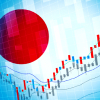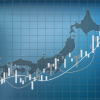Insights
Navigating Japan Equities: Monthly Insights from Tokyo (October 2022)
This month we analyse what immediate impact the full reopening of Japan could have on the economy and markets; we also review the factors that may make Prime Minister Kishida’s “asset-income doubling plan” more effective in the long term.
A big comeback: Rising fortunes of Asia’s small caps
Enhancing returns from opportunities in global credit
The current environment in fixed income is definitely challenging for investors as the rate cycle has turned. However, we believe that by unlocking the full performance potential of the different credit asset classes achieving positive absolute performance is still possible.
Global Investment Committee’s Outlook: Negative 4Q, then central banks relent and markets rebound
Our scenario is fairly ugly for the 4Q, but has a strong silver lining thereafter. We are not optimistic about the global economy and investor returns reverting to normal for an extended period, but there should be clear intermediate term relief and pockets of strong outperformance due to idiosyncratic advantages.
Balancing Act-Monthly insights: Multi-Asset Team-September 2022
The world is fast entering the adjustment phase as deglobalisation is accelerating, requiring new solutions and investment to clear new imbalances from energy supply to labour and eventually normalise inflation.
ESG through an Asian equity lens
In recent years, the increased focus on ESG has validated our beliefs. Yet, the complex and fast-changing economies and societies that make up Asia continue to be a challenge confronting investors looking to apply ESG analysis across Asian asset classes. This is a good thing, as investors who can do this successfully will likely add even more value to alpha generation.
On the Ground in Asia-Monthly Insights: Asian Fixed Income-August 2022
Inflationary pressures continued to remain elevated in July, as the headline CPI numbers in South Korea, Singapore, Indonesia and the Philippines increased, while those of Thailand and India moderated. During the month, the central banks of Thailand, Indonesia, the Philippines, South Korea and India raised their key policy rates.
Harvesting Growth, Harnessing Change - Monthly Insights: Asian Equity-August 2022
The regional index of the MSCI AC Asia ex Japan in August was flat at 0.0% in US dollar terms, recovering after falling into negative territory earlier. The North Asian region was weighed down by foreign currency effects, trailing behind its ASEAN counterpart. India benefitted from its rate hike and lower oil prices.
Navigating Japan Equities: Monthly Insights from Tokyo (September 2022)
This month we discuss the factors behind Japan’s high level of share buybacks; we also look at the economic implications of COVID in the wake of a particularly large infection wave.
Japan Value Insights: Creating economic wealth by utilising forest resources
Utilising and regenerating Japan’s ample forest resources by promoting a “wood cycle” could contribute to the creation of economic wealth and a net-zero carbon future.
Japan’s “show me the money” corporate governance: 2Q record high
The just-released 2Q CY22 data on aggregate corporate profits in Japan was very positive, with the overall corporate recurring pre-tax profit margin hitting a record high on a four quarter average.
Global Equity Quarterly (Q2 2022)
Our belief is that we have moved into a new regime where inflation will be structurally higher despite the anchors of high debt burdens, ageing societies and ongoing technological disruption.
On the Ground in Asia-Monthly Insights: Asian Fixed Income-July 2022
We are taking a more constructive view in duration overall, as we believe that the markets have largely priced in hawkish Fed expectations. Among the low-yielding countries, we prefer Singapore and Hong Kong, while we like Malaysia and India among the mid- to high-yielding countries. On currencies, we maintain our preference for the Singapore dollar.
Future Quality Insights – August 2022 - Halgos and three steps for navigating the road ahead
It may be easy to become gloomy after the drawdown of the last few months. But we believe that there are plenty of reasons to be optimistic about the prospects for compounding your future capital from today’s levels, if you take into account the following three steps: 1) recognise that that we have shifted to a different road type, and it is rougher and more variable; 2) realise that this new road may be best travelled with different vehicles; and 3) improve your probabilities by sticking to a few enduring principles.
Balancing Act-Monthly insights: Multi-Asset Team-August 2022
The shift in market narratives continues to gather pace, matching the increase in volatility of the economic cycle seen since the beginning of the pandemic. Central banks are generally aiming to smooth the economic cycle, but this time they may be adding to the volatility of the cycle instead.
Harvesting Growth, Harnessing Change - Monthly Insights: Asian Equity-July 2022
Higher commodity prices impacted returns in Asia, while a slip in prices of crude oil and metals benefitted many Asian nations. We expect the future trajectory of inflation to dictate the path of interest rates, which in turn is seen determining economic growth globally.
Asia corporate high yield: Market review and outlook
Asia high yield credit had a tough start to 2022, succumbing to heavy selling pressure . Apart from geopolitical tensions, tighter financial conditions and rising recession risk in major developed economies, sentiment toward Asia HY has been heavily weighed down by sustained stress in China’s property sector. Going forward, we believe the pace of correction will moderate.
Global Unconstrained Bond Fund Q3 2022 Outlook
We present our Q3 2022 outlook for the Global Unconstrained Bond Strategy which incorporates our core markets, emerging markets and global credit views.
Asia bonds: Calmer seas ahead
We explain why we are more positive on Asia bonds than we were at the beginning of 2022. To begin with, inflation in Asia is less severe compared to other regions, lessening the need for Asian central banks to tighten aggressively. This makes Asia bonds attractive from a real yield perspective.
Balancing Act-Monthly insights: Multi-Asset Team-July 2022
The East and West appear to be headed in different directions. The East may benefit from China’s easing and supportive growth characteristics. Meanwhile, the West is mired in slowing growth, excessive levels of inflation and central banks ever more eager to take down inflation through conventional tool kits designed to slow demand.
On the Ground in Asia-Monthly Insights: Asian Fixed Income-June 2022
Inflationary pressures accelerated in May across the region, due to higher transport and food prices. We maintain our preference for Malaysian bonds, as we believe that inflation will be better contained in Malaysia compared to other countries.
Our view on Japan’s upper house election
As it often is when Japan’s Liberal Democratic Party wins an election by an impressive amount, the initial equity market reaction was positive. But the ramifications of the ruling party’s upper house election victory will in the intermediate term be a function of what happens to the global economy and geopolitics in the months and quarters ahead.
Navigating Japan Equities: Monthly Insights from Tokyo (July 2022)
We take a look at why the Bank of Japan is likely to stick to its easy monetary policy even as other central banks embark on policy tightening; we also highlight the signs of a full-fledged capex recovery taking place in Japan.
Chinese EVs and their potential from an investment perspective
There has been remarkable progress in electric vehicle (EV) technology and its acceptance globally. We believe that Chinese EVs are set to lead the world in this area as technological innovation, demand, government policy and consumer behaviour have put China ahead of Europe and the US.
Fears of a recession and the US CPI hitting a four-decade high of 8.6% year-on-year in May rippled through various economies. Asian markets took heed from the multiple headwinds in the US, with inflation being a common theme across the region. For the month, the MSCI AC Asia ex Japan Index fell by 4.5% in US dollar terms.
Amid today’s incessant chatter of rising inflation and global recession fears, we identify three high conviction themes driving a growth renaissance in ASEAN: electric vehicles (EVs), digitalisation and a revival by the old industrial economy.
“Stagflation-lite” coupled with a severe geopolitical crisis was much worse for equities than we expected, but most of the bad news is priced in, so the prospect for global economies and equities in aggregate should improve. While we expect global GDP to moderately underperform consensus, it should skirt recession and positively surprise equity markets, which increasingly have priced in recessionary conditions.
Balancing Act-Monthly insights: Multi-Asset Team-June 2022
Defined as negative growth for two consecutive quarters, a recession is certainly in the realm of possibilities (if not probable). However, it may be more a reflection of continued extreme economic volatility following the COVID-19 pandemic, rather than a conventional recession that follows an extended period of economic expansion.
Japan’s “new form of capitalism” in review
We review the “new form of capitalism”, a government plan to boost economic growth initiated by Japanese Prime Minister Fumio Kishida, who is enjoying a high public approval rating ahead of a closely watched upper house election.
Navigating Japan Equities: Monthly Insights from Tokyo (June 2022)
This month we explain why losses by Japanese equities so far in 2022 have been limited relative to their peers; we also assess the positive impact a return of inbound tourism could have on Japan’s economy and markets.
Japan’s “show me the money” corporate governance: 1Q record high
The just-released 1Q CY22 data on aggregate corporate profits in Japan was positive, with the overall corporate recurring pre-tax profit margin hitting a record high on a four quarter average. Both the non-financial service and manufacturing sectors contributed, with the latter surging to another record high. Note that the strong results occurred despite quite weak GDP, further proving the long-held theme of this report that profit margins remain on a structural uptrend despite sluggish domestic GDP growth, as shown in the charts below. Increased pricing power, coupled with improving corporate technological prowess and efficiency, should be credited for this, but improving global economic growth certainly was also a major factor.
For the last two centuries energy revolutions have created extensive platforms for subsequent technologies to drive wealth creation and raise living standards across the world. And this decade heralds the start of an energy revolution providing investors with lots of opportunities—the beginning of an energy broadband infrastructure boom.
Harnessing Change: An investment philosophy for Asia
Change is both more prevalent and significant in Asian markets. We believe that seeking to understand it is essential to deliver sustainable returns.
Balancing Act-Monthly insights: Multi-Asset Team-May 2022
The outlook is increasingly clouded as markets come to terms with a Fed that may do “whatever it takes” to contain inflation. Given that current inflationary pressures appear to be mainly driven by supply-side constraints and rising energy prices, it follows that the Fed would need to be willing to take the economy into a recession to meet its mandate.
Asian markets were downcast in April as investors were concerned about inflation and the likelihood of a larger-than-expected rate hike by the US Federal Reserve. For the month, the MSCI AC Asia ex Japan Index fell by 5.2% in US dollar (USD) terms.
Global Unconstrained Bond Strategy Q2 2022 Outlook
We present our Q2 2022 outlook for the Global Unconstrained Bond Strategy which incorporates our core markets, emerging markets and global credit views.
Navigating Japan Equities: Monthly Insights from Tokyo (May 2022)
We discuss the implications of the weak yen, now considered by some as a menace rather than a blessing, for the Japanese market and economy. We also explain the potential impact of higher energy and commodity prices.
Ground-level observations from China
A trip back to China provided an opportunity to experience first-hand the impact innovative technology and digitalisation is having on a fast-changing urban society.
Balancing Act-Monthly insights: Multi-Asset Team-April 2022
Relief rallies are always encouraging but do not necessarily portray parting clouds for a return to “normal” market conditions. The market is still digesting a rather dizzying array of challenging dynamics that have unfolded quickly over the last quarter.
Global Equity Quarterly (Q1 2022)
We are keen to participate in the push towards a less carbon intensive future but want to do so in a balanced fashion, with one eye on the associated risks.
On the Ground in Asia-Monthly Insights: Asian Fixed Income-March 2022
We have eased our cautious view towards duration as we expect global rates to consolidate from current levels. On currencies, we are positive on the Malaysian ringgit, Indonesian rupiah and Singapore dollar.
Harvesting Growth, Harnessing Change - Monthly Insights: Asian Equity-March 2022
Asian stocks declined in March, dragged down by the Russia-Ukraine conflict. Lingering concerns over inflation also weighed on the equities markets. For the month, the MSCI AC Asia ex Japan Index fell by 2.8% in US dollar terms.
Navigating Japan Equities: Monthly Insights from Tokyo (April 2022)
This month we discuss the Japanese stock market’s recovery from the initial shock of the Russia-Ukraine war; we also assess the potential impact of a Russian debt default on Japan’s markets and financial system.
Japan Value Insights: Spotlight on sustainable companies addressing social issues
We share our thoughts on sustainable companies that address social issues and contribute to the physical and mental well-being of individuals.
The GIC expects the global economy to continue struggling in a form of “stagflation-lite” and sees a relatively flat performance for global equities for the next three to six months (although quite positive on Pacific equities), with moderate weakness for global bonds.
Balancing Act-Monthly insights: Multi-Asset Team-March 2022
The Russian invasion of Ukraine has created significant uncertainty for investors. Prior to the war’s outbreak, central bankers were already facing a challenging inflationary environment, and these new commodity-driven price pressures are set to complicate matters even further.
On the Ground in Asia-Monthly Insights: Asian Fixed Income-February 2022
We are generally neutral to slightly cautious in our view of countries whose bonds are relatively more sensitive to UST movements. Within Asia currencies, we prefer the Chinese renminbi and Malaysian ringgit over the Indian rupee and the Philippine peso.
Navigating Japan Equities: Monthly Insights from Tokyo (March 2022)
This month we discuss how higher long-term yields could impact Japanese stocks; we also focus on how robust exports could play a role in boosting the country’s long stagnant wage growth.
Japan’s “show me the money” corporate governance: 4Q record high
The just released 4Q CY21 data on aggregate corporate profits in Japan was very positive, with the overall corporate recurring pre-tax profit margin hitting a record high on a four quarter average.
Russia-Ukraine conflict – Nikko AM’s views
In order to gain a range of perspectives on the Russia-Ukraine conflict, Nikko Asset Management has gathered the views of various experts and investment teams, representing many of our major asset classes and geographical regions.
On the Ground in Asia-Monthly Insights: Asian Fixed Income-January 2022
Policy actions by monetary authorities diverged across the region; we remain cautious on bonds of low yielding countries and regional currencies.
Navigating Japan Equities: Monthly Insights from Tokyo (February 2022)
We analyse the course the Bank of Japan could take as other major central banks move towards policy change; we also take a deeper look into Japan’s strong exports, which are expected to keep buoying the economy in 2022.
Have you ever stopped to imagine what would happen if the world’s central banks spent just over a decade pouring USD 25 trillion of liquidity into the economy with more than 60% of that liquidity created in the last two years? In this article, we’ll try to assess what has happened and think about how investors should navigate the next phase of the greatest financial experiment of all time.
Balancing Act-Monthly insights: Multi-Asset Team-February 2022
The outlook is currently challenging. Tightening is coming, but it is not here yet and in the meantime current policy remains quite accommodative. There is no doubt that extremely easy policy boosted equity prices, which were reinforced by strong earnings. Still, we believe organic growth can continue.
Harvesting Growth, Harnessing Change - Monthly Insights: Asian Equity-January 2022
Asian stocks had a tough start to 2022 amid concerns that persistent inflation could cause any tightening by the US Federal Reserve (Fed) to be more aggressive than expected. For the month, the MSCI AC Asia ex Japan Index fell by 3.10% in US dollar (USD) terms.
US Federal Reserve: Approaching lift-off
Increasing expectations of a more aggressive Fed tightening cycle have led to a sell-off in US Treasuries. We share our thoughts on what this means for investors in 2022 and discuss our outlook for Asian bond markets.
Differentiation through engagement: Opportunities in Japan equities
We highlight the increasing importance of engagement in Japan, explain how it could be the key to unlocking the long-underperforming Japanese market’s potential, and assess how it can lead to the generation of alpha.
India: Reaping growth from change
Going back to India for a month after two long years of not being able to visit my family, I was pleasantly surprised by the new normal. While there has been much adversity, COVID-19 has also sparked positive change, especially on technology adoption.
Thoughts for seasick investors
It would not be surprising if the major swings in the markets and macroeconomic conditions, including historic central bank shifts, have made most investors somewhat seasick. Recently on a day-to-day basis, markets seem to react quite irrationally, but the overall backdrop is fairly clear: the markets are getting accustomed to one of the most rapid and major shifts in Federal Reserve policy ever in its history.
Global Equity Quarterly (Q4 2021)
An ability to look forward to better times and remain optimistic is invaluable. These attributes are no less helpful when investing in equities. Whilst you can get an unpleasant surprise from misjudging the direction of the tide while enjoying your picnic, the consequences for misjudging the direction of the liquidity waves look more pronounced than ever as we enter 2022.
Balancing Act-Monthly insights: Multi-Asset Team-January 2022
As is often the case, markets are a better reflection of general sentiment than news headlines and so far, it points to an ongoing global recovery as equities hold their gains of 2021 and long-term bond yields rise. It may not be time yet to write off more difficult scenarios derived from the outbreak of Omicron, but facts so far do speak more positively than just one month ago.
On the Ground in Asia-Monthly Insights: Asian Fixed Income-December 2021
On the back of uncertainties surrounding Omicron and major central banks turning hawkish, we deem it prudent to hold a slightly cautious stance on duration, as well as a slightly defensive stance on Asian currencies.
Harvesting Growth, Harnessing Change - Monthly Insights: Asian Equity-December 2021
Taiwan and South Korea were buoyed by strong exports as sustained global demand for electronics supported hardware tech stocks amid widespread supply chain disruptions. The ASEAN region saw mixed returns. Thailand was the best performer as policymakers approved new stimulus measures to support domestic consumption, while the Philippines had to delay COVID-19 vaccinations on the back of Typhoon Rai.
Navigating Japan Equities: Monthly Insights from Tokyo (January 2022)
We expect Japanese equities to rise significantly in 2022, supported by factors such as the government’s fiscal and coronavirus policies, the reshuffling of the Tokyo Stock Exchange (TSE) and robust exports.
2022 Global Multi Asset Outlook: Gauging long-term growth prospects
We maintain a constructive view of risk assets but are cognizant that the path toward realising gains will be more delicate as we traverse the course of the Fed and other central banks removing their easy policies.
2022 Asian Equity Outlook: Well positioned to navigate tightening
We believe that Asian economies are well positioned to navigate monetary tightening in the US. Government finances are healthier, as are corporate balance sheets. Most Asian economies are digitising faster than their western peers, while consumption is set to receive a meaningful boost from economic reopening.
Global Investment Committee's 2022 Outlook: Positive for risk assets
According to our Global Investment Committee, which concentrates on the intermediate term-view regarding developed markets for pension funds and other long-term investors, 2022 looks to be a challenging, but positive year for risk assets. We believe that the G-3 central banks will become more hawkish, and such pivots can often cause potholes and at the very least headwinds, but we trust that policymakers can traverse their new course successfully overall.
2022 New Zealand Fixed Income Outlook: Boxing on into 2022
For a nation that prides itself on punching above its weight in all we do, 2021 has seen New Zealand bobbing and weaving against the ropes somewhat, as we’ve fought the economic impact of an enduring COVID-19 pandemic. We may have been down in some places, but we’re certainly not out as we approach 2022.
2022 Global Equity Outlook: Disruption sharpens the focus on Future Quality
The initial discovery of the Omicron variant was met with fairly sensational reporting by some of the world’s media and this fed through quickly into investor sentiment. It is probably true, however, that even if Omicron had not surfaced it was probably about time that investors were again reminded of the volatility that resides in markets, despite the mollifying impact of endless liquidity injections by central banks.
2022 Japan Equity Outlook: ESG to bring Japan to the fore
ESG initiatives are expected to become ever more important for companies and investors around the world in 2022. We expect many Japanese companies to come to the fore amid this global shift towards ESG, with enhancements in ESG disclosures shedding light on their value creation opportunities amid the current drive towards decarbonisation.
2022 Singapore Equity Outlook: Focusing on sustainable growth
The Singapore economy is on a road to recovery. Although the economy has already rebounded sharply in 2021, we expect the recovery theme to remain intact and continue supporting the Singapore economy in 2022. We see a broadening of growth within Singapore’s key economic engines in 2022, with a sharper recovery expected in the services sector as the economy reopens.
2022 China Equity Outlook: Focusing on new market leaders
Amid a flurry of headlines, investors may have largely overlooked the significant number of recent positive developments in China, such as initiatives directed towards ambitious renewables targets, the continued opening up of the financial sectors and support for a significant number of industries including AI and big data. We believe these areas could become the new leaders of China’s capital markets, representing investment themes for the next several decades.
2022 Asian Fixed Income and FX Outlook: Regional recovery expected
The economic recovery in Asia ex-China is likely to improve significantly in 2022 as regulations are eased, borders are reopened and vaccination rates increase. We anticipate these developments to boost private sector confidence, providing an important tailwind for Asian ex-China growth in 2022.
Harvesting Growth, Harnessing Change - Monthly Insights: Asian Equity-November 2021
Asian stocks fell in November on concerns that the spread of the new Omicron COVID-19 variant could derail global reopening plans and delay economic recoveries.
2022 Global Fixed Income Outlook
We present our 2022 outlook for core markets, emerging markets and global credit.
2022 Asian Credit Outlook: Growth momentum seen reviving
The macro backdrop and robust corporate credit fundamentals remain supportive of Asia credit spreads. As such, we expect growth momentum of many Asian economies to gather pace heading into 2022. Overall corporate credit fundamentals are expected to remain robust, with earnings growth staying strong—albeit at a slightly slower pace compared to 2021.
Global Investment Committee’s 2022 Outlook: Continue risk-positive, especially for Japan
The global economy should match the consensus for strong growth, thanks to vaccinations, continued fiscal stimulus, acceptable global geopolitical conditions, and continued low interest rates despite increasingly hawkish central banks. Such, via increased corporate profits, should allow equity markets to perform very well ahead, with impressive returns in each region, particularly in Japan.
Japan’s “Show Me the Money” Corporate Governance: 3Q Record High
The just released 3Q CY21 data on aggregate corporate profits in Japan was very positive, as although for the single quarter, the overall corporate recurring pre-tax profit margin declined from the 2Q, as it does routinely for this non-seasonally adjusted data.
Future Quality Insights - December 2021 - A trip to Lisbon
Just a few weeks ago I attended my first in-person conference since 2019. Over 40,000 people descended upon Lisbon for Web Summit, one of the world’s largest technology conferences. The event brings together CEO’s and founders of established firms together with start-ups and policymakers to discuss and pitch ideas over the course of a week.
Why Japan’s CPI remains low when other economies grapple with inflation
As the global economy takes steps to recover from the pandemic, prices have steadily risen around the world. Japan, however, remains an exception among the major economies. The country’s headline CPI did tick up in October, but at a very modest pace, showing that inflation is yet to gain strong traction in a country long stuck in deflation.
China: Regulate in order to innovate
Every few years, concerns emerge over whether China is investable. We are currently witnessing the latest round of this cycle amid China’s drive to regulate. However, investing in China during such moments of doubt has reaped substantial returns in the past. The key is not missing the forest for the trees when China is regulating in order to innovate.
Asian stocks rose in October, with investors remaining focused on rising inflationary pressures and the US Federal Reserve’s tapering plans. The markets’ key concern is China’s economic performance and its impact on the energy and commodity complexes.
On the ground in Asia: Monthly insights from the Asian Fixed Income Team-October 2021
We expect Indonesian bonds to outperform, as demand is supported by positive supply technicals. Meanwhile, we see bonds of low-yielding countries like Singapore, South Korea and Thailand prone to bear flattening, driven mainly by UST movement.
Japan Value Insights: Medical technology key to value and addressing inefficiencies
Japan’s rapidly advancing medical technology is viewed as a way to address the healthcare sector’s inefficiencies while at the same time offering potential value opportunities.
Japan Equity Monthly – October 2021
We explain how the recent lower house election win gives Japan’s new prime minister a free hand to pursue policies aimed to help the economy recover from COVID-19. We also analyse why a weaker yen no longer provides as much of a boost to equities.
Global Equity Quarterly Q3 2021
Our philosophy is centred on the search for “Future Quality” in a company. Future Quality companies are those that we believe will attain and sustain high returns on investment. ESG considerations are integral to Future Quality investing as good companies make for good investment.
Asian Fixed Income Monthly - September 2021
US Treasury (UST) yields rose in September, with the US Federal Open Market Committee finally alluding to moderate its asset purchases as soon as November. The rise in rates was further supported by an escalating power crunch across Europe and China amid surging energy prices prompting concerns about inflation.
Multi-asset Monthly - October 2021
Volatility has arisen as we expected it eventually would, and September is often an apt month to rediscover risk given market participants’ return from summer vacations noting that record high equity markets do not quite square with a number of significant risk events on the near-term horizon.
Asian Equity Monthly - September 2021
Asian stocks fell in September, with concerns about China’s growth outlook and the US Federal Reserve (Fed)’s taper plan being the key drivers of sentiment. For the month, the MSCI AC Asia ex Japan Index declined by 4.2% in US dollar (USD) terms.
Japan Equity Monthly - September 2021
We provide an update of Japan’s political calendar as the new Prime Minister Kishida leads the ruling party into a 31 October general election, which could have a significant market impact. We also discuss what the recent China-related volatility could mean for the Japanese market.
Global Investment Committee’s 12-month Outlook: Continue risk-positive, especially for Japan
Out of the six scenarios presented, a narrow majority of our committee agreed again on a positive scenario in which the global economy matches the market consensus for solid growth, while equities continue to rally.
Latin America: Supplier to a commodity-hungry world
Inflation is on everyone’s mind. From central bankers to bakers, it is one of the biggest topics of discussion. The prices of many commodities are rising sharply. The reasons vary. Supply constraints, sharp rise in demand or bad weather—take your pick.
Multi-asset Monthly - September 2021
As we contemplate a post-pandemic world, it is becoming more likely that things will not return to “normal” as we once knew it. While vaccines have been highly successful in preventing serious illness in those who are still contracting the virus, the Delta variant of COVID-19 is also proving to be harder to contain.
Asian Fixed Income Monthly - August 2021
US Treasury (UST) yields rose in August, prompted by data showing stronger-than-expected US employment growth. The rise in rates was supported by hawkish comments from some US Federal Reserve (Fed) officials.
Staying adaptive to an evolving recovery
The world is settling into a new normal that is likely to look quite different from pre-COVID-19 norms. This includes different patterns of demand shaped by learning to live with the virus and an ongoing fiscal thrust with firm policy objectives.
Asian Equity Monthly - August 2021
Asian stocks gained in August. While concerns about the spread of the Delta variant weighed on markets at the beginning of the month, the US Federal Reserve (Fed)’s dovish commentary and a rebound in the battered Chinese technology (tech) sector lifted sentiment towards the month-end
Japan Equity Monthly - August 2021
The news of Prime Minister Suga’s impending resignation triggered a rally in Japanese equities this week, with the market hoping that a new administration will bring the COVID-19 outbreak under control and hasten the normalisation of the economy. We explain what the market expects from the new administration and assess the implications of Japan’s upcoming general election.
Japan Value Insights
Japan’s drive to embrace hydrogen as an alternative energy source is an opportunity to identify hidden value in firms that are willing to tackle and resolve social issues.
Japan’s “Show Me the Money” Corporate Governance: 2Q Positive Profit Surprise
The just released 2Q CY21 data on aggregate corporate profits in Japan was surprisingly positive, as the overall corporate recurring pre-tax profit margin surged relatively near its record high in the 3Q CY18.
Japan’s structural reform to benefit investors
The three Japan-related news topics that have overwhelmingly dominated the attention of Western media so far this year are COVID-19 (by far), the Tokyo Olympics and the showdown at Toshiba.





































































































